Not Just Pang-ulam: Why Backyard Farming Deserves Your Full Hustle
Let me ask you something real—why are you raising livestock? Is it just to have something fresh for the table, or are you aiming to build something bigger? I’ve met a lot of people who say, “Backyard farming lang ‘yan (That’s just backyard farming),” as if it’s a hobby, not a serious opportunity.
But here’s the truth: Alpha Agventure Farms didn’t grow into a name known for raising various breeds of chickens, ducks, geese, turkeys, pheasants, goats, sheep, rabbits, and more because of luck or land. It grew because we approached every animal, every enclosure, every decision—like we were building a legacy.
We started small. No fancy buildings. Just vision, grit, and a willingness to learn from every mistake. That mindset is what I now call the ALPHA Framework. It’s what helped us—and what can help you—turn your backyard livestock project into a serious, income-generating enterprise.
Here’s what ALPHA stands for:
- Aspire – Have a vision beyond the backyard.
- Learn – Never stop studying the science of animal farming.
- Practice – Apply what you learn, even if you make mistakes.
- Harvest – Profit, yes—but also harvest data, experience, and lessons.
- Advance – Scale wisely. Think long-term.
This article isn’t just a how-to. It’s a mindset reset.
If you’re in your 20s or 30s and wondering if farming has a future—it absolutely does. The only question is whether you’ll take the shortcut, or the ALPHA path.
🔍 Let’s start with this: What animal do you dream of raising—and why? Drop your answer in the comments. I want to hear your plans.
Tip 1: Aspire Like an Alpha — This Isn’t Just a Pet Project
If your dream is to earn real money from backyard farming, then let’s be blunt: you have to stop thinking small.
There’s a big difference between raising a few chickens for fun and building a small but scalable livestock operation. One is a hobby. The other is a startup. And if you want to be the alpha in your area—the go-to name when people talk about quality eggs, duck meat, or breeding goats—you’ve got to aspire like a real entrepreneur.
I didn’t grow Alpha Agventure Farms by settling for “sapat na” (just enough). I grew it by asking: How can I make this sustainable, profitable, and replicable? That mindset changes everything.
🧠 Backyard Farming is Still Farming
Backyard scale doesn’t mean backyard thinking. If you’ve only got 100 square meters, you still need to think about:
- Species selection: Are you choosing animals suited to your climate, your land, and your market?
- Housing layout: How can you maximize airflow, sunlight, and drainage?
- Breeding goals: Are you planning for meat, eggs, show quality, or all of the above?
At Alpha Agventure Farms, we didn’t just raise any chicken. We studied breed performance. We chose dual-purpose and heritage breeds like Rhode Island Reds because they’re hardy, good layers, and market-friendly. A study from the Philippine Journal of Veterinary and Animal Sciences even found that heritage chickens exhibit better adaptability in free-range systems compared to commercial layers (De la Cruz et al., 2019).
💰 Aspire with Numbers, Not Just Daydreams
Don’t say “I want to earn from ducks.” Say, “I want 100 ducks producing an average of 200 eggs per duck per year, priced at ₱7 per egg, with 90% fertility and 80% hatch rate, targeting balut and penoy markets in local wet markets.”
Sound nerdy? That’s good. Aspiring like an alpha means you dream in numbers and systems.
Want to raise goats? Then start visualizing your breeding calendar, feed cost per head per day, and kidding intervals. Want rabbits? Then factor in your grow-out time, slaughter weight, and what month rabbit meat sells best.
You can’t scale what you don’t measure. That’s why aspiring without a plan is just wishing.
📍 It Starts With You
You don’t need 10 hectares. You need a notebook, a spreadsheet, and a serious attitude. If you’re in college, start with 10 chickens. If you’re working in the city, start with ducks in your parents’ backyard. What matters is that your aspiration isn’t shallow. It’s rooted in numbers, goals, and a willingness to push past the “pang-ulam lang” mindset.
When I talk to young people, I always ask: Do you want to eat from your backyard—or earn from it? Either is okay. But if it’s the latter, then you’ve got to be deliberate.
👇 Comment Corner
What’s your big livestock dream? How many animals do you see yourself raising in 3 years? Drop it in the comments—I’d love to see what you’re aspiring to build.
Tip 2: Learn Like an Alpha — YouTube Isn’t Enough
I’ve watched my fair share of farming videos—some with questionable lighting and even worse background music. They were a great starting point, but if you want to level up from backyard hobbyist to respected livestock farmer, it’s time to go deeper than just following DIY chicken coop guides. Real learning happens when you test, adapt, and dig into the science behind what works.
Learning like an Alpha means turning curiosity into competency.
Alpha Agventure Farms wouldn’t be known today for its healthy flocks of ducks, geese, turkeys, pheasants, and chickens if I had relied solely on trial-and-error or vlogs. Everything I know, I learned through hands-on experience, observation, and a lot of self-study. It wasn’t about following someone else’s playbook—it was about creating my own.
🧠 Real Learning Requires Real Sources
When I started raising Rhode Island Reds, I didn’t just look at the egg count on a Facebook post. I pulled out actual scientific journals. Why? Because this breed isn’t just “magaling mangitlog” (good at laying eggs). It’s also known for its dual-purpose value, strong disease resistance, and adaptability to free-range conditions. According to a study published in The Philippine Agricultural Scientist (Reyes et al., 2018), heritage breeds like RIR tend to maintain better laying rates under stress and perform well on forage-based diets—ideal for backyard or semi-intensive systems.
This kind of scientific grounding isn’t just true in the Philippines. A study by Abdelqader, Wollny, and Gauly (2007) conducted in rural Jordan found that local chicken breeds, when matched with the right environmental and nutritional management, outperformed exotic breeds in terms of adaptability and overall flock productivity. That kind of insight only comes from real research—not from TikTok.
Ask yourself:
- Do you know the difference between pre-starter, starter, grower, and layer mash?
- Can you calculate average daily gain (ADG) in your goats or sheep?
- Do you understand the concept of photoperiod and how it affects egg production?
If not, it’s time to learn like an Alpha.
📚 Where to Actually Learn
Here’s where I recommend you invest your brain power:
- DA-BAR (Department of Agriculture – Bureau of Agricultural Research) publications – These are gold mines of local, scientific knowledge.
- PCC (Philippine Carabao Center) and Bai’s National Swine and Poultry Research and Development Center – They offer open-access materials, webinars, and even short courses.
- Scientific journals – Try Philippine Journal of Veterinary and Animal Sciences, Philippine Agricultural Scientist, or Livestock Research for Rural Development.
- Seminars with farm immersion – Just like the exclusive on-site training I offer in my farm consultancy service. Instead of just PowerPoint slides, we dive straight into hands-on learning with the animals right at the heart of your farm. We spend the whole day applying lessons directly to your animals, making the experience truly practical and impactful.
🐔 RIRs and the Myth of “Madaling Alagaan”
I’ve met people who say, “Sir, Rhode Island Reds daw madaling alagaan.” (They say RIRs are easy to raise.)
Yes, they’re hardy—but hardy doesn’t mean indestructible. If you don’t manage ventilation, overstocking, or biosecurity, even the toughest breeds will suffer. In fact, a 2020 study from Visayas State University (Luna et al., 2020) found that RIR hens subjected to poor litter management had increased incidence of coccidiosis despite being otherwise resilient.
That’s why real learning matters. When you understand disease cycles, behavior-based design, and nutritional adjustments by age and breed—you’re farming like a professional.
📓 Keep a Learning Journal
Alpha learners don’t just watch—they record, compare, and reflect. Keep a farm log. Take photos of abnormal poop. Record egg weights. Write down what you did when a goat had a cough and whether it worked.
This data becomes your personal textbook—and no influencer can compete with that.
💬 Comment Corner
What’s something new you learned this year about the animal you’re raising? Did it come from experience—or from study? Share it below. Let’s crowdsource some wisdom.
Tip 3: Practice Like an Alpha — Fail, Adjust, Repeat
Here’s the brutal truth: your first goat might die. Your ducks might stop laying. Your rabbits might eat their young. And no, that doesn’t mean you’re not cut out for this. It means you’re doing it for real.
Every successful farmer I know—including myself—got here by making mistakes and learning from them. So if you’re scared of failing, I’ll tell you now: this might not be for you.
But if you’re willing to practice like an Alpha, then you’re exactly who this industry needs.
🧪 Backyard Farming is an Experiment Lab
Think of your backyard as your personal test plot. Whether you’re raising geese or goats, you’re constantly experimenting—on feed types, housing styles, mating schedules, and disease prevention protocols.
Let me give you an example.
At Alpha Agventure Farms, we once tried free-ranging ducks and geese together. Bad idea. Ducks are messy swimmers, while geese like clean, still water. The geese got aggressive, the ducks got stressed, and egg production dropped by 30% in just 2 weeks.
We adjusted the layout—separate paddocks, shared grazing, isolated swimming zones. Egg count rebounded, and we gained insight that we now apply in every satellite subfarm we help build.
That’s what practice means: test something, observe it, tweak it.
And we’re not the only ones doing this. Duck raisers in Central Luzon reported significant productivity boosts when they adopted simple, low-cost incubation and brooding adjustments tailored to backyard conditions—proof that innovation doesn’t have to be expensive (Villanueva & Lim, 2022).
🐐 The “Perfect” Plan Won’t Survive Your First Goat Escape
I had a client who drafted a flawless breeding calendar for his hybrid goats. He color-coded everything—heat detection, flushing diet, deworming schedule, even mineral blocks by brand. But guess what?
On the day of scheduled mating, the buck jumped the fence three days early and bred the wrong doe. Welcome to real-life farming.
Science matters. Planning matters. But practice means accepting that animals don’t read spreadsheets. They chew them.
What do you do instead? You adjust. You keep the fence higher next time. You mark animals more clearly. You build flexibility into your systems.
📊 Turn Practice Into Process
Here’s the trick: After every trial, write it down. What feed did you use? What was the weather? What did the poop look like? (Yup, get used to talking about poop.)
This is how Alpha Agventure Farms built its current systems. We didn’t guess how many eggs a turkey hen would lay in a local climate—we tracked it over multiple breeding seasons. We didn’t assume rabbits were compatible with our local temperature—we documented heatstroke cases and then redesigned the cages.
If you’re raising pheasants, for instance, you’ll quickly learn they are more skittish than chickens. We once had pheasants injure themselves during a thunderstorm because the cage wasn’t properly light-controlled. That led us to install night lights and lower perches.
You only get that kind of insight through experience.
💪 Let Go of Perfection
You will forget to shut a cage. You’ll overfeed. You’ll miss a sick duck.
That doesn’t make you incompetent. That makes you a beginner. And here’s the thing about Alphas: we don’t hide our mistakes—we track them, learn from them, and share them so others don’t have to repeat them.
So don’t wait until everything’s perfect. Raise that batch of chicks. Start with 3 rabbits. Try rotational grazing with your sheep. Get your hands dirty, your boots muddy, and your notes full of scribbles.
That’s how you grow.
💬 Comment Corner
What was your biggest mistake so far in livestock farming—and what did you learn from it? Share it below. You might help someone avoid the same trap.
Tip 4: Harvest Like an Alpha — Know What Success Looks Like
Harvest. For many people, that word just means “pera” (money). And sure, income matters. I’m not running Alpha Agventure Farms out of pure love for poultry poop.
But if you’re truly in this for the long game—if you’re building a livestock legacy—you need a broader definition of success.
🌾 Harvest is More Than Just Cash
Let me tell you about our first goose eggs. They didn’t sell fast. In fact, we ended up boiling some just to avoid spoilage. Profit? Zero. But what we gained was a priceless data point: We now knew how long it took for a goose to lay in our setup, in our climate, on our feed ration.
That’s real harvest.
Your first harvest might be knowledge. It might be confidence. It might be reputation.
You successfully raised 10 rabbits and didn’t lose one to heatstroke? That’s a win. Your first clutch of turkey poults made it past 2 weeks? That’s gold. Harvest those results. Document them. Build on them.
In Nueva Ecija, a study on native goat farming showed how smallholder farmers who waited for proper market weight—rather than rushing sales—ended up earning more and securing loyal repeat buyers (Marquez, dela Cruz, & Bautista, 2021). The slow route brought sustainable gains. That’s the Alpha mindset.
📈 Know Your Metrics—And Track Them
One thing I always tell new farmers: “If you didn’t measure it, did it even happen?”
At Alpha Agventure Farms, we track:
- Egg production per breed per month
- Fertility rates of ducks, chickens, and pheasants
- Daily weight gain (DWG) for goats and sheep
- Feed conversion ratios for rabbits
- Mortality and morbidity rates
Let’s say you’re raising Rhode Island Reds. Do you know how many grams of feed it takes to get 1 egg per day? If not, you won’t know when something’s wrong—or when something’s working really well.
According to a local study by Espina et al. (2019), RIR hens in backyard systems showed peak egg production at around 18 weeks, with 72–75% laying rate under optimal conditions. Are you reaching that level? If not, something’s off—feed, lighting, stress, genetics?
Start tracking. That’s how you improve.
💡 Harvest Innovation Too
You know what else we harvest? Ideas. Sometimes, the best innovations come when you’re fixing a mistake.
Once, our ducklings kept getting trampled in the brooder. We cut plastic crates in half, made little “duckling hammocks,” and boom—injuries dropped. Now we teach that to our seminar attendees.
Innovation is part of your harvest. So don’t just look for what you can sell. Look for what you can scale.
🐣 Celebrate Milestones, Not Just Millions
You don’t need ₱1 million to call yourself successful. You need a strong start, a plan for growth, and the discipline to track your numbers.
Did you successfully hatch chicks without a hen? That’s a milestone.
Did your goat birth twins and you didn’t panic? That’s success.
Are your ducks laying consistently, even if it’s just 8–10 eggs per day? That’s progress.
Success looks different for every backyard farmer, and it doesn’t always show up on your GCash wallet. Sometimes, it shows up as a healthy animal, a new skill, or even a mistake that didn’t happen because you learned from the last one.
💬 Comment Corner
What are YOU harvesting from your farm right now—money, insights, or milestones? Share below. Let’s celebrate the quiet wins together.
Tip 5: Advance Like an Alpha — Don’t Just Level Up, Lift Others
Let’s get one thing straight: being an Alpha doesn’t mean being the only one on top. It means leading by example—and then reaching back to pull others up with you.
You don’t become great by hoarding knowledge. You become great by creating value, by sharing insights, and by making sure that your success is a signal, not a secret.
And that’s exactly why I keep creating content like this—even when I’m not obligated to. Because real Alphas don’t gatekeep; they give back.
🧗 Your Growth is Meant to Inspire Others
Look, when I started Alpha Agventure Farms, I didn’t have a fancy team or a massive land area. What I had was a few chickens, a notebook full of questions, and the stubbornness of a goat.
Now, we’re raising chickens, ducks, geese, turkeys, goats, rabbits, sheep, and even exotic birds like pheasants—and mentoring other farmers to do the same. And you know what? Seeing them succeed brings a different kind of joy.
You can do that too, even if you’re still small-scale.
Did you successfully raise geese on banana leaves? Share that on your page. Found a clever way to predator-proof your rabbit cages using recycled materials? Film a reel. Inspire others to start, experiment, or push through.
When you advance, you have a duty to echo your progress.
🧠 Teach What You Know—Even If You’re Still Learning
Some young farmers think, “I’m not ready to teach. I’m still learning.”
But guess what? So am I. So is every vet, scientist, and breeder I know.
Teaching isn’t about perfection. It’s about perspective.
Let’s say you’re raising Rhode Island Reds. If you figured out how to get them to lay consistently even during rainy months, that’s something dozens of backyard raisers are still struggling with. Sharing that doesn’t make you arrogant—it makes you useful.
In fact, one study from the University of the Philippines Los Baños (UPLB, 2020) found that local farmer-to-farmer mentorship significantly improved survival rates in goat and sheep projects in CALABARZON. Sharing works.
🤝 Build Your Tribe, Not Just Your Flock
You don’t need to go at this alone. Join Facebook groups, follow legit agri-vets on TikTok, attend seminars (like the ones we host at Alpha Agventure Farms), and keep the agri convo going.
The best part? When you share your journey, you attract your tribe. Other young people who are also figuring it out. You might even spark collaborations, like feed group buys, breeder swaps, or shared transport for vaccines and meds.
I’ve had attendees from our seminars go on to become distributors, breeders, and even resource speakers. That’s what advancing looks like—multiplying impact.
🔁 The Alpha Feedback Loop
When you help others grow, they often return the favor. You learn something new. You get inspired. You’re reminded of your why.
It becomes a feedback loop of progress, and suddenly, you’re not just running a farm. You’re part of a movement.
That’s what Alpha Agventure Farms is all about. Not just profit—but proof. Not just yield—but influence.
And the best part? You don’t need to wait until you’re big to start doing this. Start with your neighbor. Your cousin. Your online followers.
💬 Comment Corner
Who’s someone that inspired your farming journey? Tag them or tell us how they helped. Or maybe you’ve helped someone else already—share your story in the comments. Let’s normalize lifting others as we rise.
From Backyard to Big League: You Don’t Need a Mansion to Build an Empire
If you’ve made it this far, let me say this: you’re already ahead of the curve.
You didn’t just scroll past. You leaned in. You’re not just dreaming of raising chickens, ducks, goats, or rabbits—you’re mapping out a path. A path that starts in your backyard, sure, but could very well lead to something far bigger than yourself.
That’s how Alpha Agventure Farms was built. One bird, one failure, one weird-looking duck egg at a time. It wasn’t magic. It was mindset.
We aspired to build something of value.
We learned from every source we could find—books, mentors, science journals, even mistakes.
We practiced every day, even when it was hard.
We harvested not just profit, but insights and discipline.
And now, we advance by bringing others with us—like you.
And if you ever catch yourself thinking, “But I don’t have the capital. I don’t have the land. I don’t have the right connections.”—let me tell you what I told myself when I was cleaning chicken poop in 35°C heat:
“The only thing I need to get started is a reason not to stop.”
So, future livestock boss: are you ready to go full ALPHA?
Tell me in the comments:
- Which of the five tips spoke to you the most?
- What kind of livestock do you dream of raising?
- What’s stopping you—and how do you plan to push through?
I read every comment. I’d love to see what you’re building.
See you in the trenches.
📚 References
- Abdelqader, A., Wollny, C. B. A., & Gauly, M. (2007). On-farm investigation of local chicken biodiversity and performance potentials in rural areas of Jordan. Livestock Research for Rural Development, 19(8). http://www.lrrd.org/lrrd19/8/abde19099.htm
- Espina, D. M., Lopez, J. S., & Alcantara, M. J. (2019). Performance evaluation of Rhode Island Red and commercial layer breeds under backyard conditions. Philippine Journal of Veterinary and Animal Sciences, 45(2), 89–95.
- Marquez, M. A., dela Cruz, M. E., & Bautista, E. L. (2021). Livelihood potential of native goats in Nueva Ecija: A case study of smallholder farmers. Philippine Journal of Animal Industry, 54(1), 25–33.
- University of the Philippines Los Baños. (2020). Goat Production Manual: Farmer-to-Farmer Learning Approach in CALABARZON. Institute of Animal Science, College of Agriculture and Food Science.
- Villanueva, A. V., & Lim, A. M. (2022). Adoption of low-cost incubation and brooding practices among smallholder duck farmers in Central Luzon. Philippine Agricultural Scientist, 105(3), 315–324.
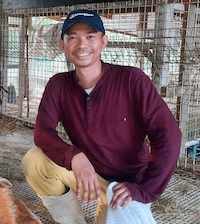
Mr. Jaycee de Guzman is a self-taught agriculturist and the founder and patriarch of Alpha Agventure Farms, recognized as the leading backyard farm in the Philippines. With a rich background in livestock farming dating back to the early 1990s, Mr. de Guzman combines his expertise in agriculture with over 20 years of experience in computer science, digital marketing, and finance. His diverse skill set and leadership have been instrumental in the success of Alpha Agventure Farms.



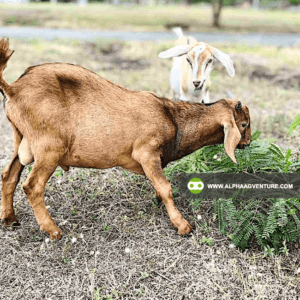
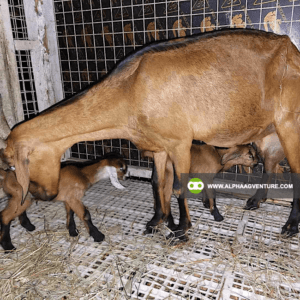
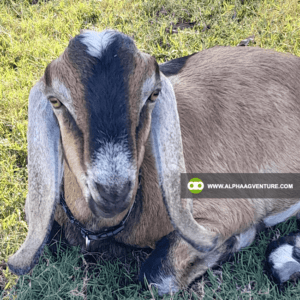

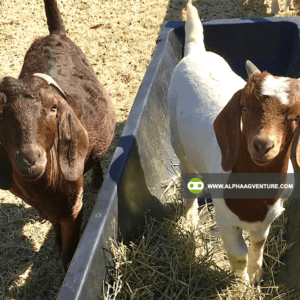

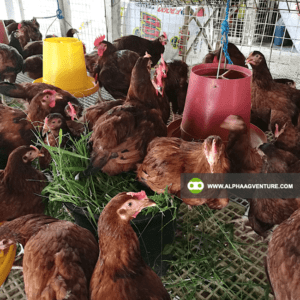
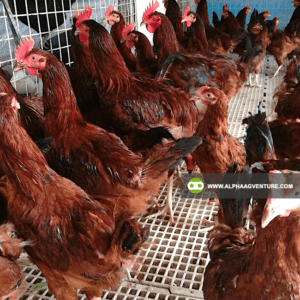
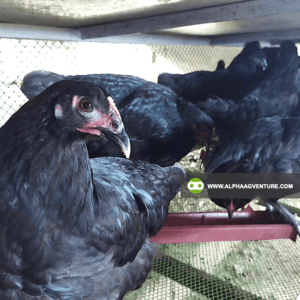
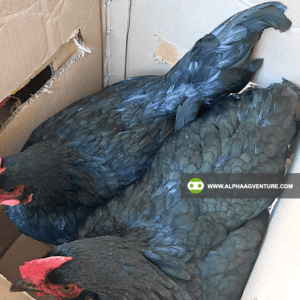
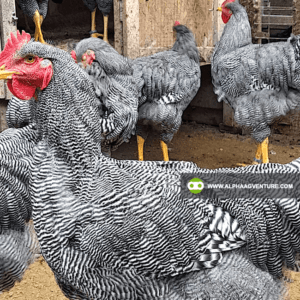


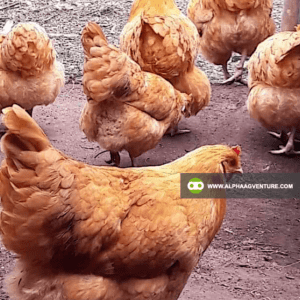
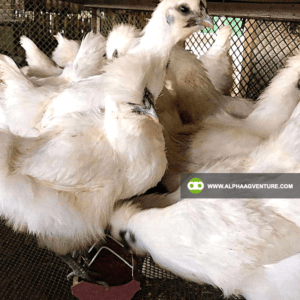
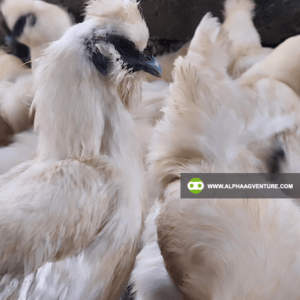
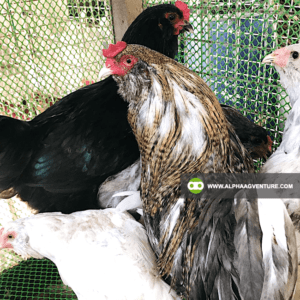

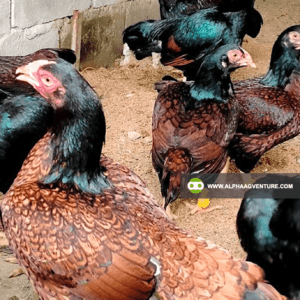
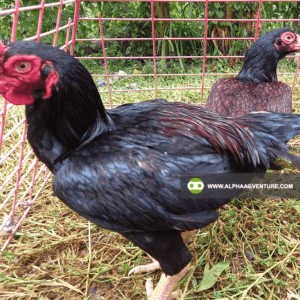
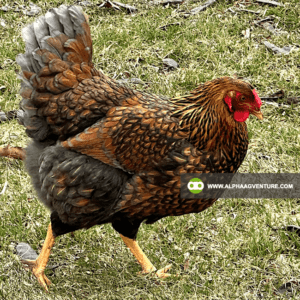
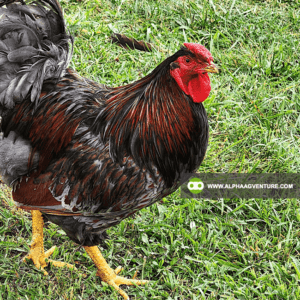
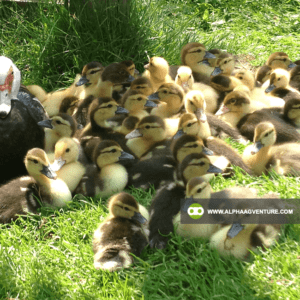
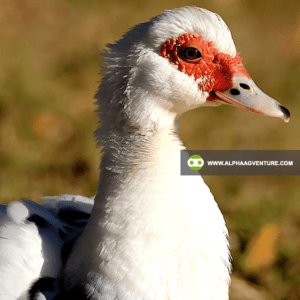

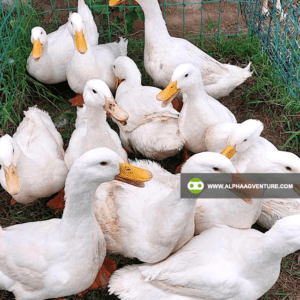
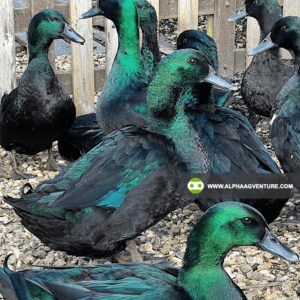


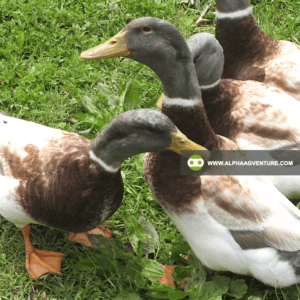
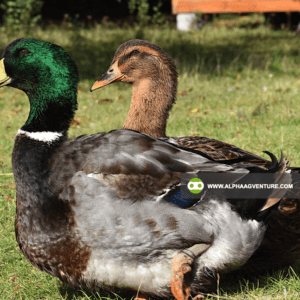

I always dream of raising birds. Birds are generally quick to flee when approached and I’ve always wanted to tame and know more about them.
I want to have my own sustainable, income-generating farm that primarily consists of quality chickens, ducks and goats. I don’t really dream of having too
many animals, just enough to maintain and produce offsprings that I can individually troubleshoot during unforeseen occurrences.
Something new I learned while raising a few Rhode Island Red chickens is that the egg when cracked can have some brown pigments and still be safe to eat. This initially came as a shock as most white shelled eggs from the market seldom have these brown pigments and to which I learned is because it’s unappealing to most customers.
The biggest mistake I had in livestock farming is not having a tight grip on biosecurity, cleanliness and molting awareness. I once raised 9 dominant cz hens and everything went according to plan in the first year of raising them even without any vaccination and because of the feeling of success, I didn’t get the max potential harvest of eggs out of it. I no longer cared if the neighbor’s native rooster would get inside their net corral. A rat gave birth underneath their nest boxes, the hens ate the rat pups and a few weeks after that two hens got coryza. I managed to cure both hens but their egg production never got back on track and it was also molting season at the time so many factors were at play and I only got a lesson out of it albeit a valuable one.
As of now, I’m harvesting tangible proof of remedies from my past mistakes with the RIR hens that I’m raising currently. I made sure their coop couldn’t be accessed by outsider chickens and there are no rats taking home in their enclosure. I’ve added a lighting program and feed them more during these months when molting happens and alas! The hens are laying eggs consistently.
The one who inspired me the most is Alpha Agventure Farm and Sir Jaycee of course! It was the music less and discussion based videos you made in Youtube that really inspired me, more than my school, teachers, parents or anyone I know. Expectations were already placed upon me by others but seeing someone else tackle poultry farming like it’s business, not hype, was what really made my real passion in life spark.
Tip No.3 spoke to me the most. After all, my life motto is “No pain no gain.”
What’s stopping me from realizing my poultry farming dream is my confidence. I used to always blame others because they always tell me farming is a difficult career and I wouldn’t make a living out of it. They were right about it being difficult but they don’t know what I’m really capable of. I always go with the flow of how others expect of me and it really did dictate what future I should pursue but eventually on my first year of college as a Computer Engineering student, I finally spoke my true desires in life and pursue Agriculture. I’m still lacking in talking confidently in what I want to become because when I graduated with an Agricultural degree, I was then suggested to work abroad which is not bad but having a farm in the Philippines was what I really wanted. When I told my parents about applying as a subfarm of Alpha Agventure, they were very skeptical saying it’s too much capital for just a bunch of chickens and too risky to start a business on. After researching, studying and giving them data on how I’ll succeed, telling them my plans on operating it and what I’ll expand out of it, they eventually let me take a shot. Despite having their reserved support, it gave life my originality and it gives me a drive to continue with my dream of becoming the best poultry farm here in Bohol.
Your story is deeply moving—thank you for sharing it. You’ve shown grit, growth, and genuine passion, the kind that can’t be faked or borrowed. That lesson from the Dominant CZ hens? Priceless. And now, watching your RIRs thrive under better care—that’s proof that you’re not just dreaming; you’re learning, doing, and becoming.
It takes courage to go against the grain, especially when everyone expects something different from you. But you’re building something real. Something yours. Keep going. The best poultry farm in Bohol doesn’t sound like a dream anymore—it sounds like a goal already in motion. Go for it, Vincent!
Yes sir!